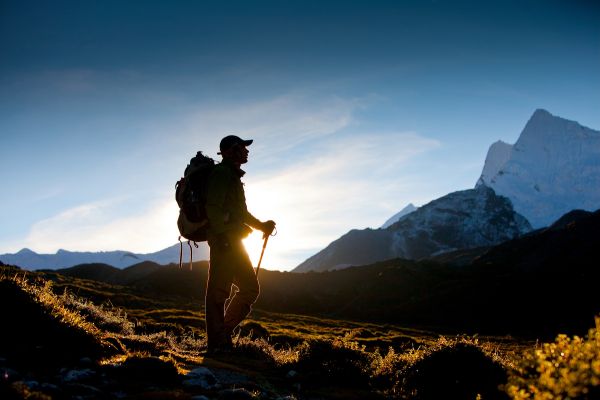When people talk about bucket-list adventures, trekking in the Himalayas almost always makes the cut. And let’s be real—there’s nothing quite like standing on rugged trails with towering snow-capped peaks in every direction, the air crisp, thin, and just a little magical. The Himalayas aren’t just mountains; they’re a whole experience—raw, humbling, and life-changing.
Why Trekking in the Himalayas Feels Different
You can trek anywhere in the world, sure, but trekking in the Himalayas hits differently. The thing is, these mountains aren’t just tall—they’re the tallest in the world. Everest, Annapurna, Kanchenjunga… the names alone send chills down your spine. But it’s not just about bragging rights. Walking through remote villages, crossing suspension bridges over roaring rivers, and sipping tea in a mountainside lodge while yaks shuffle past—there’s a rhythm to life here that makes you pause.
Unlike many trekking destinations, the Himalayas are layered with culture and spirituality. Prayer flags flutter above trails, ancient monasteries perch on cliffs, and locals greet you with warm smiles that somehow cut through the cold. You’re not just hiking; you’re stepping into a centuries-old way of life.
Best Time to Go
Timing matters, big time. If you head out in the dead of winter, chances are you’ll be snowed in before you even hit base camp. The sweet spots for trekking in the Himalayas are usually spring (March to May) and autumn (September to November). During these months, the skies are clearer, the temperatures are manageable, and the views—oh, the views—are unforgettable.
Summer brings monsoon rains, which can mean slippery trails and leeches (not exactly Instagram-worthy). Winter treks are possible, but they’re for the hardcore crowd. For most people, sticking to those two prime seasons is the safest and most rewarding bet.
Popular Treks You Can’t Miss
If you’re new to trekking or just testing the waters, the Annapurna Base Camp trek is a classic. It’s doable for beginners with some preparation and offers a mix of jungle, terraced fields, and high-altitude landscapes. Then there’s the Everest Base Camp trek, probably the most iconic of them all. Standing at the foot of the world’s tallest mountain? Enough said.
For those looking for something a little less mainstream, try the Langtang Valley trek in Nepal. It’s shorter, less crowded, but still gives you those epic Himalayan backdrops. And if you’re really chasing the road less traveled, regions like Ladakh in India or Bhutan’s Snowman Trek bring you face-to-face with remote beauty most people never see.
Prepping for the Trek
Now, let’s talk reality. Trekking in the Himalayas isn’t just a casual walk in the park. Altitude is the big boss here. Even the fittest person can get altitude sickness if they push too fast. That’s why acclimatization days are non-negotiable.
Packing smart is another must. You’ll need sturdy boots, layers for unpredictable weather, and a solid backpack. Trust me, you don’t want to be that person wearing thin sneakers at 4,000 meters. Oh, and snacks—always bring extra snacks. There’s something about sharing a chocolate bar with fellow trekkers that makes the climb a little easier.
Training beforehand helps too. Regular hikes, cardio, and leg strength exercises can save you from misery later. Remember, trekking here isn’t a sprint. It’s long days, steep climbs, and learning to pace yourself.
The Culture Along the Way
One of the coolest parts of trekking in the Himalayas is the cultural mix. Nepalese sherpas, Tibetan monks, Indian villagers—all with stories that make you rethink what “tough” really means. Stopping for tea in a mountain lodge isn’t just about warming your hands; it’s about connecting with people who live in the shadow of these mountains year-round.
You’ll pass Buddhist stupas, mani stones carved with prayers, and prayer wheels that spin in the wind. There’s this constant reminder that the Himalayas aren’t just rock and ice—they’re sacred. And being a respectful traveler here isn’t just polite, it’s essential.
Challenges You Should Expect
Let’s not sugarcoat it: trekking in the Himalayas is tough. The altitude alone can leave you gasping for breath after a few steps. Add to that unpredictable weather—sun one minute, snowstorm the next—and trails that sometimes feel endless, and you’ve got a real challenge.
But here’s the thing: that challenge is the reward. Every aching step is balanced by moments of awe. A sunrise over Annapurna. A glimpse of Everest through a break in the clouds. Or even just sitting on a rock, sipping water, and realizing you’ve made it further than you thought possible.
Why It’s Worth It
At the end of the day, trekking in the Himalayas isn’t just about reaching a destination. Sure, standing at Everest Base Camp or gazing up at Kanchenjunga is incredible. But what sticks with you are the little things. The laughter of fellow trekkers around a fire. The sound of yak bells echoing in the valley. The way the mountains make you feel both tiny and limitless at the same time.
These are the memories that last long after you’ve flown back home and the blisters have healed. You’ll find yourself daydreaming about it, scrolling through old photos, maybe even planning your next trek before you’ve unpacked your bag.
Final Thoughts
If you’re searching for an adventure that pushes your limits, humbles your spirit, and rewards you with views you’ll never forget, then trekking in the Himalayas is it. It’s raw, it’s challenging, and it’s not always comfortable—but that’s what makes it unforgettable.
So lace up your boots, take a deep breath, and start planning. The mountains are waiting, and trust me, once you’ve trekked in the Himalayas, no other trail will ever feel quite the same.

